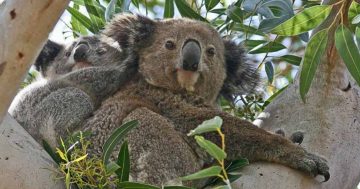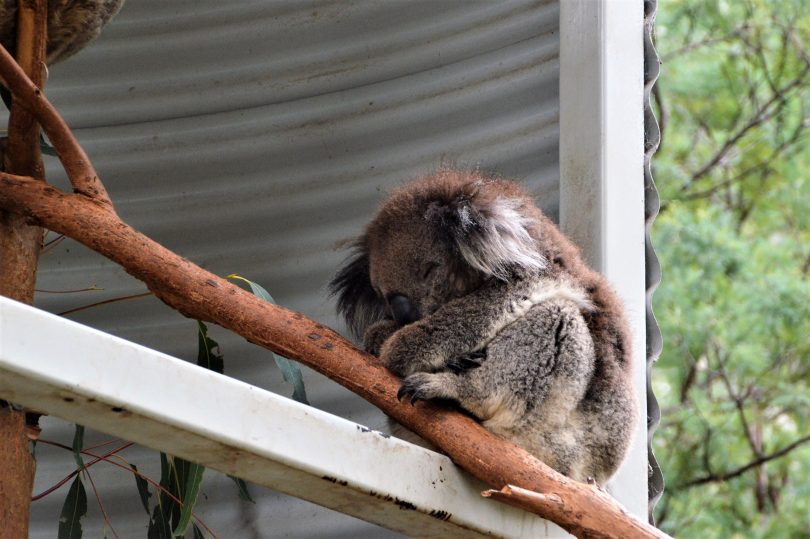
Koalas are among the iconic Australian animals which are under threat. Photo: Glynis Quinlan.
Did you know that iconic Australian animals such as the koala, the wombat and the emu are on the threatened species list? Or that it’s human behaviour that often presents one of the biggest dangers to these animals?
In the lead up to National Threatened Species Day this Friday (September 7), the National Zoo & Aquarium is running a week of activities aimed at educating Canberrans about the different native species which are under threat and how we can play a part in protecting them.
The zoo’s focus will be to build awareness of the 13 native endangered species of animals and fish which live at the zoo through special daily zookeeper talks and feeds, a photo competition, a threatened species trail and scavenger hunt, and a range of other children’s activities.
Zoo manager Russell Jackson said that if you asked most people to name 10 native species that are threatened in Australia they would find it hard to do. He said they would often be surprised to find out it included two of our most iconic animals, the koala and the wombat.
“We want to encourage them to become aware of which species are under threat and the reasons behind that and for them to identify ways to help alleviate that threat,” Mr Jackson said.
Mr Jackson said that it is usually human behaviours that the native animals are under threat from and the zoo is hoping to educate Canberrans to look out for threatened animals “in their own backyard” and ensure they aren’t harmed.
Mr Jackson said that Australians don’t do a great job in terms of protecting our native wildlife. In the last 200 years, over 100 plant and animal species have become extinct in Australia.
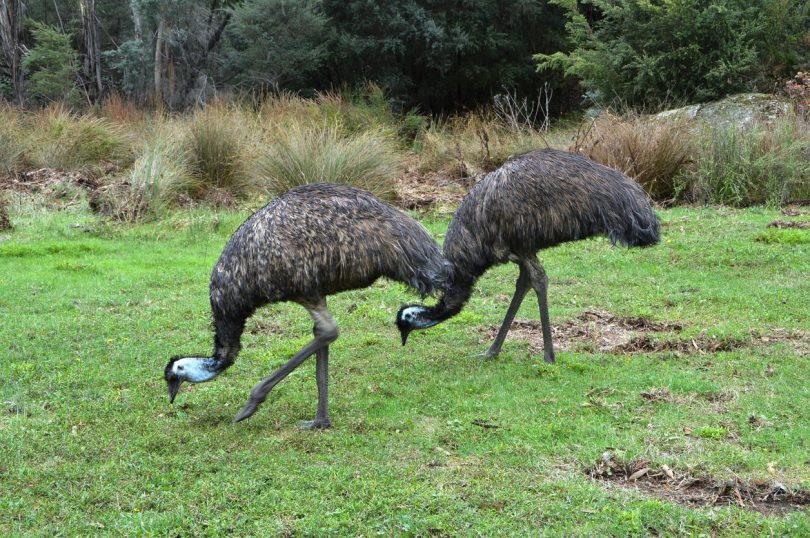
There were once three types of emus in Australia but two are now extinct. Photo: Glynis Quinlan.
National Threatened Species Day was created in 1996 to commemorate the day of the death of the last Tasmanian Tiger who died in a Hobart zoo in 1936.
Today most species tend to become threatened because of habitat destruction and the invasion of non-native species.
Saving threatened species is seen as important in order to have a healthy and diverse environment. The point is often made that once animals become extinct, they are gone forever.
National Threatened Species Week at the zoo started on Monday, September 3 and will run until Sunday September 9 from 9:30 am to 5 pm. For more information, please click here.
Below are 13 animals or fish that currently live at the zoo and are among Australia’s threatened species. The information has been provided by the National Zoo & Aquarium.
Koala – ‘Vulnerable’

Matilda the koala at Canberra’s zoo is part of a vulnerable native species. Photo: Supplied.
Koalas were widely hunted during the 1920-30s and their numbers dramatically declined. Koalas have since made a comeback over much of their former range through reintroduction but their populations are now smaller and scattered. Sadly, around 80 per cent of koala habitat has been lost to human homes, drought and fires.
Wombat
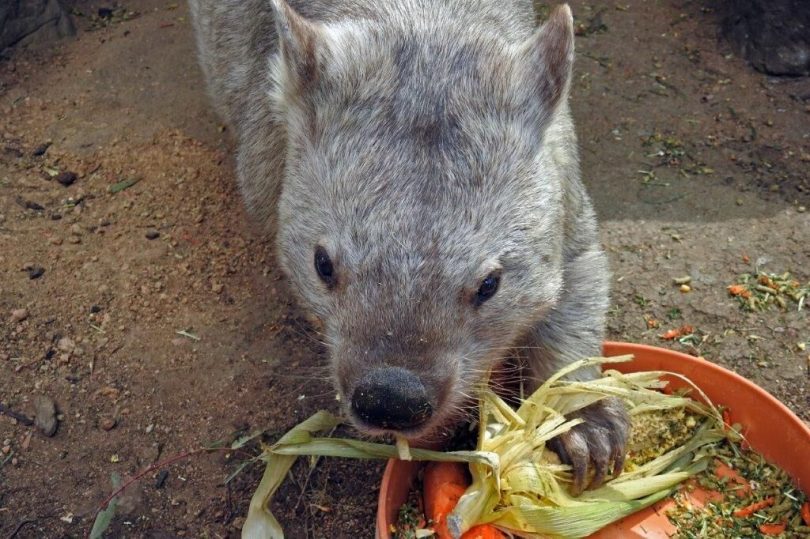
The zoo’s resident common wombat, Winnie, is the oldest wombat in Australia at the age of 31. Sadly, most wombats in the wild only live to five years of age. Photo: Supplied.
There are three species of wombat; the critically endangered Northern hairy-nosed wombat, the vulnerable Southern hairy-nosed wombat and the Bare-nosed wombat, also known as the Common wombat, which is unfortunately no longer that common.
All wombat species face similar conservation threats which include competition for food with introduced species, such as cattle, sheep and rabbits, as well as being attacked by wild dogs. At one time, there were only 35 Northern hairy-nosed wombats left in the world but thanks to conservation efforts, there are now approximately 200 left in the wild.
Emu – ‘Under Threat’
There were originally three types of emus but the Tasmanian emu and King Island emu became extinct after the arrival of European Settlers in 1788. Today, emus are protected by law meaning that harming them in any way is illegal.
Dingo – ‘Endangered’
Dingoes are threatened by human persecution, habitat loss and cross-breeding with wild domestic dogs. In recent years, there has been a marked shift in the attitude of public and scientific communities toward the role and protection of dingoes in Australia. As top order predators, their function in the Australian ecosystem is crucial, particularly in the regulation and suppression of pest species, such as foxes and feral cats.
Silver Perch – ‘Critically Endangered’
Silver perch, also known as Murray perch or black bream, are freshwater fish which are native to and were once widespread throughout the Murray-Darling river system. Silver perch can also be found in the Canberra region. The species has been recorded in the Murrumbidgee River, downstream of Kambah Pool.
Unfortunately, numbers of silver perch have declined, with major threats to their survival including the loss and destruction of habitat, introduced fish species and overfishing.
Parma Wallaby – ‘Vulnerable’
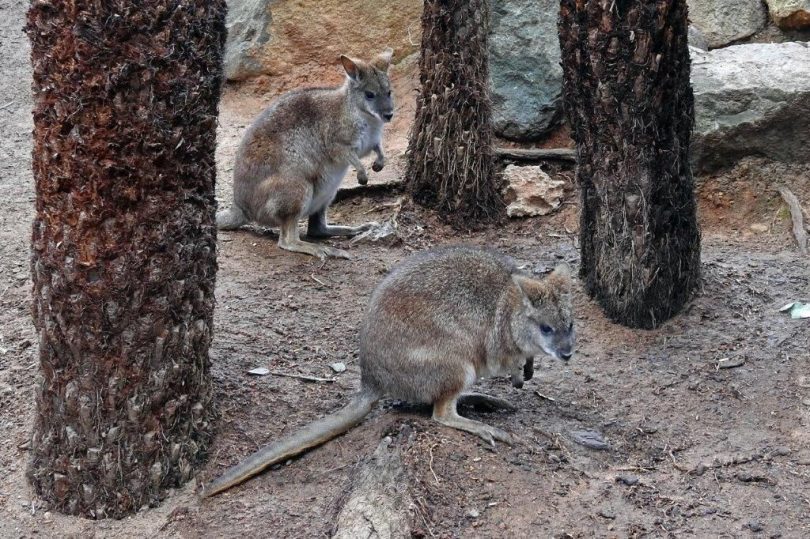
Parma Wallabies at the zoo. They were believed to be extinct in the early 19th century. Photo: Supplied.
The Parma Wallaby stands at only 45 – 53 cm tall and is currently confined to suitable forests throughout NSW, up to 1,000 metres above sea level. Parma Wallabies were believed to have become extinct in the early 19th century.
However, in 1965 a feral population was discovered to be thriving on Kauwau Island, New Zealand. Great efforts were then made to transport some of these animals back to Australia for a captive breeding and re-introduction program.
Not long after, a wild population was re-discovered near Gosford, NSW by the Australian Reptile Park’s founder Eric Worrell in the 1970s.
The Parma Wallaby remains under the threat of extinction and has been listed as a vulnerable species by the NSW Government. Main threats include attacks from feral cats and foxes, as well as the loss of habitat through clearing for grazing and bush fires.
Little Penguins – Under Threat

Little Penguins are ‘Under Threat’. Photo: Supplied.
The Little Penguin is the only species of penguin native to Australia. Little Penguins were once fairly common on the mainland but today their colonies are generally limited to offshore islands, such as Phillip Island in Victoria.
Little Penguin populations are currently threatened by factors such as habitat loss or disturbance, attacks from foxes and dogs, overfishing their food source and pollution from oil and rubbish.
Humphead Wrasse – ‘Endangered’
The Humphead Wrasse can reach a length of more than two metres long and weigh up to 190 kilograms. They are highly valued as a luxury food fish and are actively sought after for the live fish trade. Unfortunately, their population has reduced by 50 per cent over the course of 30 years.
Bush Stone-Curlew – ‘Endangered’ in NSW and Victoria
Due to threats such as environmental disturbance and predation, the bush stone-curlew has become very rare in southern pastoral areas of Australia. They typically come out only at night to feed and hunt primarily on the ground. Major threats to the bush stone-curlew populations include being attacked by foxes and cats, the trampling of eggs and clearance of woodland habitats.
Goodfellow’s Tree Kangaroo – ‘Endangered’

The Goodfellow’s Tree Kangaroo is quickly losing its habitat. Photo: Supplied.
Tree kangaroos are native to Australia, Indonesia and Papua New Guinea and as they live in trees, the majority of their diet consists of leaves and fruit. Like many forest dwellers, the Goodfellow’s Tree Kangaroo is quickly losing its habitat. Rapid deforestation combined with hunting has left fragmented populations of decreasing numbers.
There are currently no direct conservation measures in place for this endangered species. The National Zoo and Aquarium is part of a breeding program to help maintain a captive population.
Tasmanian Devil – ‘Endangered’
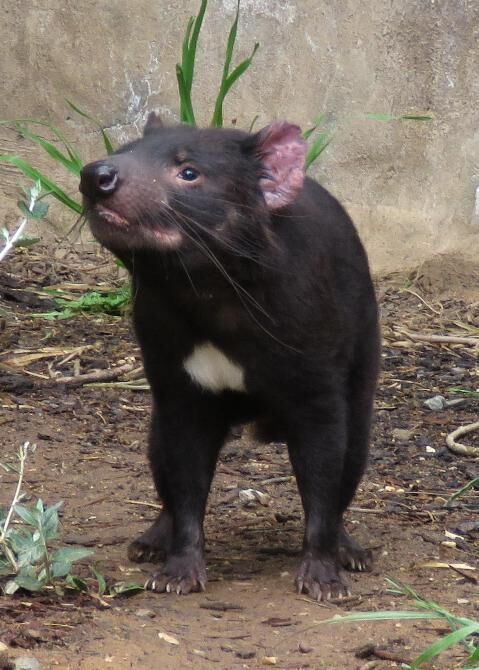
There has been a 64 per cent decline in sightings of the Tasmanian Devil. Photo: Supplied.
Tasmanian devils were once found on mainland Australia and their fossils have been discovered widely. Some studies have shown they became extinct on the mainland as little as 400 years ago. Today, the devil is a Tasmanian icon but it hasn’t always held this status as they were once considered a nuisance by early European settlers and for over a century, Tasmanian devils were trapped and poisoned.
Since then, the population has gradually increased after they were protected by law in June 1941. Unfortunately, devil populations are still at risk due to the transmissible and incurable Devil Facial Tumour Disease. This disease has had devastating effects on devil numbers and resulted in a 64 per cent decline of sightings.
Barking Owl – ‘Vulnerable’ in NSW
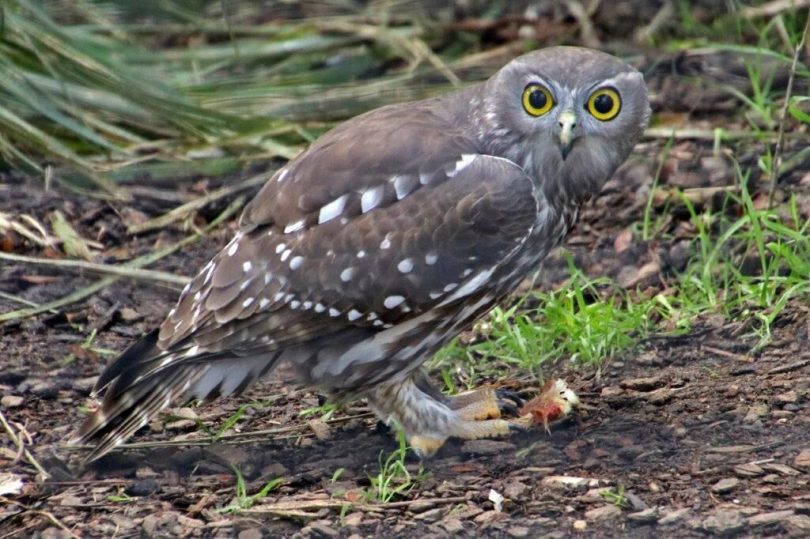
Habitat loss and degradation is a major threat to the ongoing survival of the Barking Owl. Photo: Supplied.
Although common in parts of northern Australia, the number of Barking Owls has declined in southern parts. Populations now occur in a wide but sparse distribution through NSW with habitat loss and degradation acting as a major threat to their ongoing survival.
Australian Lungfish – ‘Vulnerable’
The Australian Lungfish is a long-shaped and heavy- bodied freshwater fish. Some research suggests that this fish can live for up to 100 years. However, one of the major threats facing lungfish and other species is the building of waterway barriers (such as weirs) which can restrict the movement of adult fish. The Australian Lungfish is fully protected and cannot be captured without a special permit.












